
But some species can easily rival rainbows when it comes to wild colors and patterns.
The world’s most colorful snakes show off nature’s creativity with mind-blowing blues, reds, greens, and more.
These reptiles use their colors for all sorts of things—hiding, warning off enemies, and even attracting mates.
And they don’t just live in far-off lands.
From American coral snakes with their bright warning bands to Asian tree pythons with their emerald scales, colorful snakes live all over the globe.
Let’s check out eleven of the most jaw-droppingly beautiful snakes and see what makes them so vibrant and where they live.
1. Blue Malaysian Coral Snake
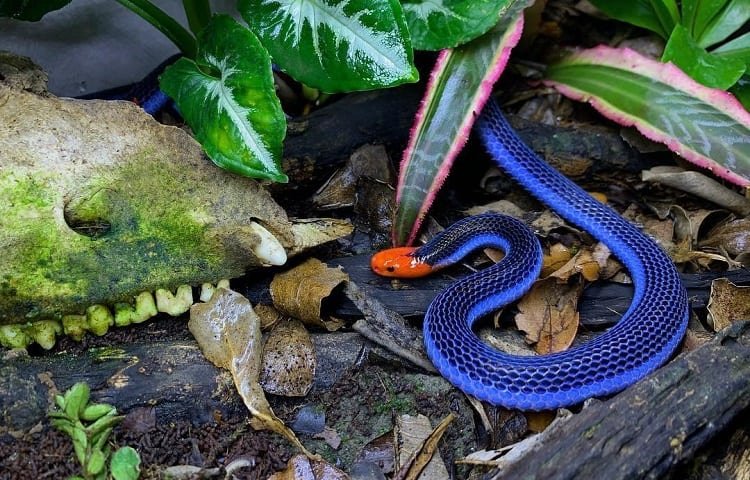
The Blue Malaysian Coral Snake is one of the most stunning animals out there. Its electric blue body almost glows, and you might have to look twice to believe it’s real.
This snake’s scientific name is Calliophis bivirgatus. You might also hear it called the blue coral snake or blue Malayan coral snake.
The colors are wild. There’s a bold cobalt-blue body, a red head, and a red tail. And its belly is red, too, so the contrast is really something.
At first glance, this snake hardly looks real. Its shiny blue body and vivid red markings almost seem painted on.
You’ll find this snake in Southeast Asia. Just a heads-up: it’s highly venomous, so admire from a safe distance if you ever spot one.
2. Rainbow Boa
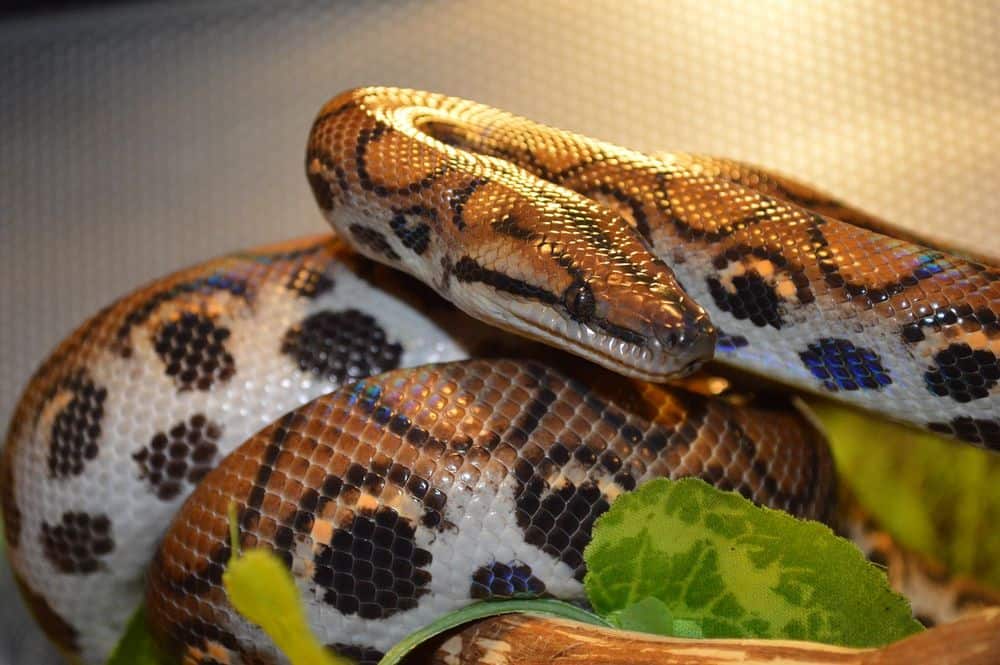
The Rainbow Boa absolutely lives up to its name. Its scales shimmer with rainbow colors when the light hits just right.
You’ll find this snake in Central and South America, hanging out in rainforests.
The Brazilian Rainbow Boa gets its name from the wild, iridescent sheen on its scales. It really does look like a moving rainbow.
Check it out in the sun and you’ll spot red, orange, yellow, green, and blue shimmering across its body. That shine comes from the way their scales bend the light. The colors shift as the snake moves, so every glance feels a bit different. It’s genuinely mesmerizing.
Rainbow Boas are non-venomous and pretty gentle. You won’t have to worry about them doing you any harm. They make for great pets as well as great photography subjects. Just make sure you follow our advice on photographing snakes to get the best photos and to keep you, and the snakes, safe.
3. San Francisco Garter Snake
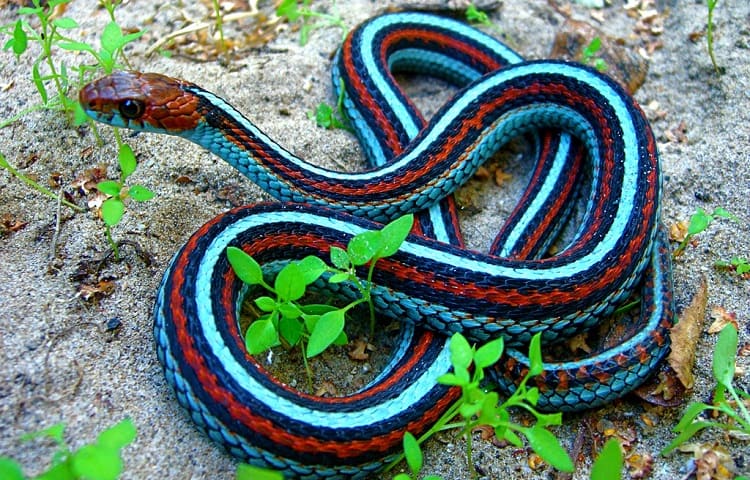
The San Francisco garter snake pops up only in parts of California. Some people even call it the most beautiful snake in the world, though that is certainly a matter of taste.
This snake flashes a burnt orange head and wild stripes down its body. You’ll spot red, turquoise, and black stripes on its slender frame. A green-yellow stripe runs along the back, edged with black. Red stripes sit beside it, sometimes broken up with black spots.
This rare snake lives only in San Mateo County and northern Santa Cruz County. It’s been endangered since 1967.
Look for them near ponds and wetlands. They eat frogs, fish, and small animals, but hawks, herons, and other snakes hunt them too.
They’re thin and usually grow to about 3 feet. Their colors really make them stand out from other garter snakes.
4. Mangrove Snake

The mangrove snake grabs your attention with its bold black and yellow pattern. Bright yellow or gold rings wrap around its deep black body.
It’s also called the gold-ringed cat snake. You’ll find it in Southeast Asia’s tropical forests and mangrove swamps.
Mangrove snakes get pretty big. They can reach 8-9 feet long, which is massive for a cat snake.
The contrast between black and gold is hard to miss. The yellow bands are spaced out all along its body.
These snakes have rear fangs and are mildly venomous. Please don’t try to handle one in the wild.
Mangrove snakes climb well and spend a lot of time in trees. They hunt birds, eggs, and small mammals at night.
Their flashy colors warn off predators. That bold pattern basically says, “don’t mess with me.”
5. Amazon Tree Boa
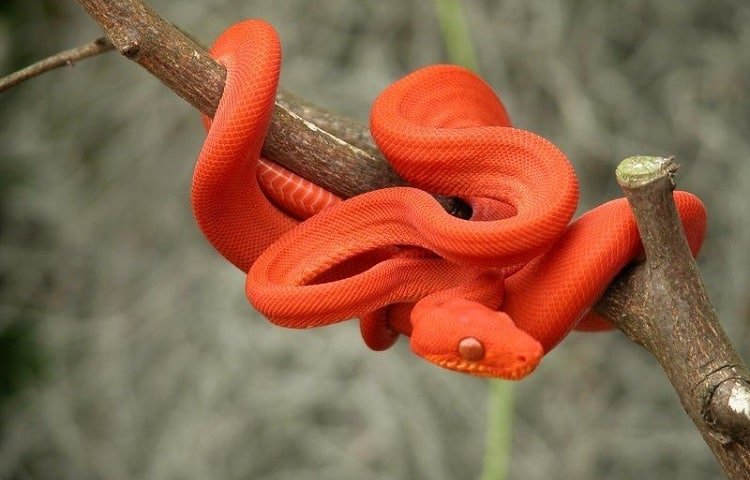
The Amazon Tree Boa is easily one of the most colorful and variable snakes in South America. Each one seems to have its own wild style.
You’ll see them in shades of orange, yellow, and red. No two snakes look quite alike, which makes them fascinating for snake keepers.
These snakes live in trees and spend most of their time wrapped around branches. Watch them move—they’re seriously graceful in the treetops.
The Amazon Tree Boa goes by other names too, like garden tree boa, Cook’s tree boa, or even common tree boa.
They’re gorgeous, but be careful—these snakes can be pretty aggressive and quick to bite. They’re really best for experienced snake owners.
These snakes use heat-sensing pits to track prey, making them skilled ambush hunters.
6. Indian Cobra
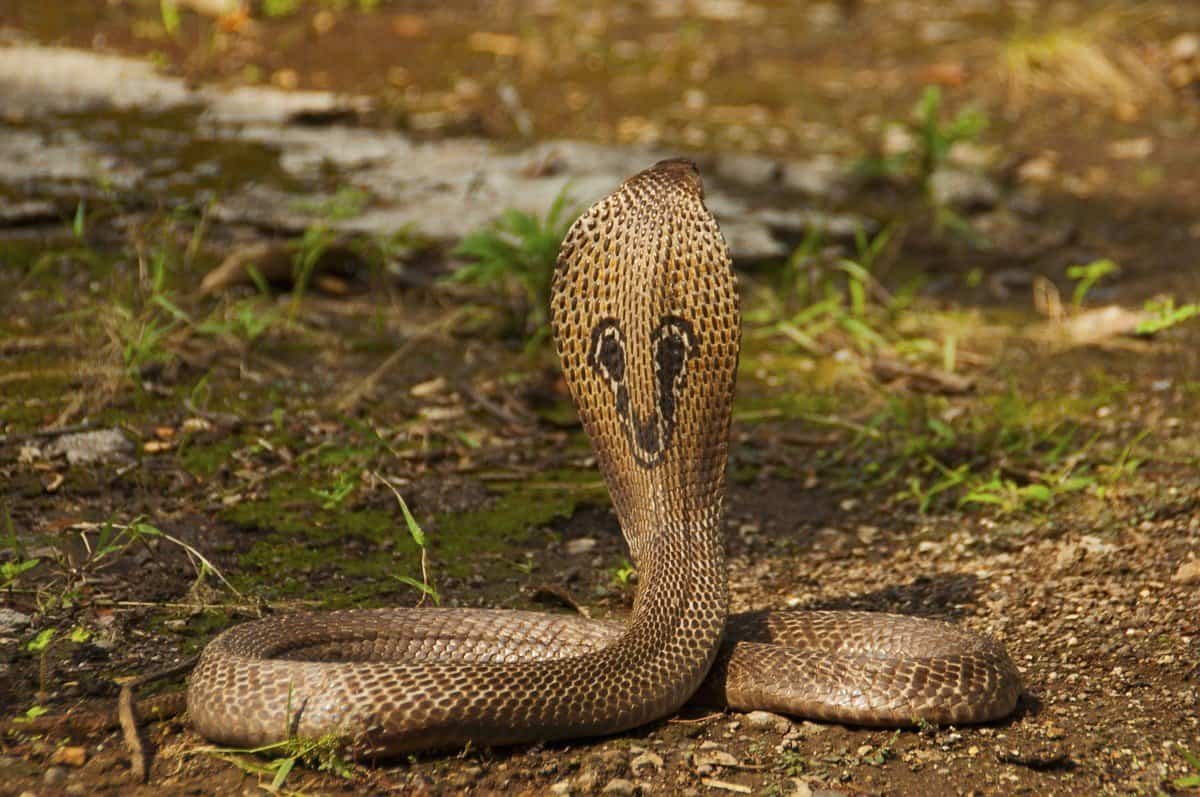
The Indian cobra goes by a bunch of names—Asian cobra, spectacled cobra, or binocellate cobra. No matter what you call it, this snake’s colors and patterns are unforgettable.
Indian cobras usually grow between 4 and 7 feet long. Their most famous feature? That dramatic hood, which spreads out when they feel threatened.
Their colors are just as dramatic. You’ll see shades of brown, yellow, and black, often with those classic “spectacle” markings on the hood that look like little eyeglasses.
You’ll find Indian cobras all over India and parts of Asia. They like spots near water and even around people sometimes. But keep your distance—they’re one of India’s most dangerous snakes.
The Indian cobra is a big deal in Indian culture and mythology. You’ve probably seen them in art or heard stories about them. Their colors and that iconic hood make them hard to forget.
7. Milk Snake
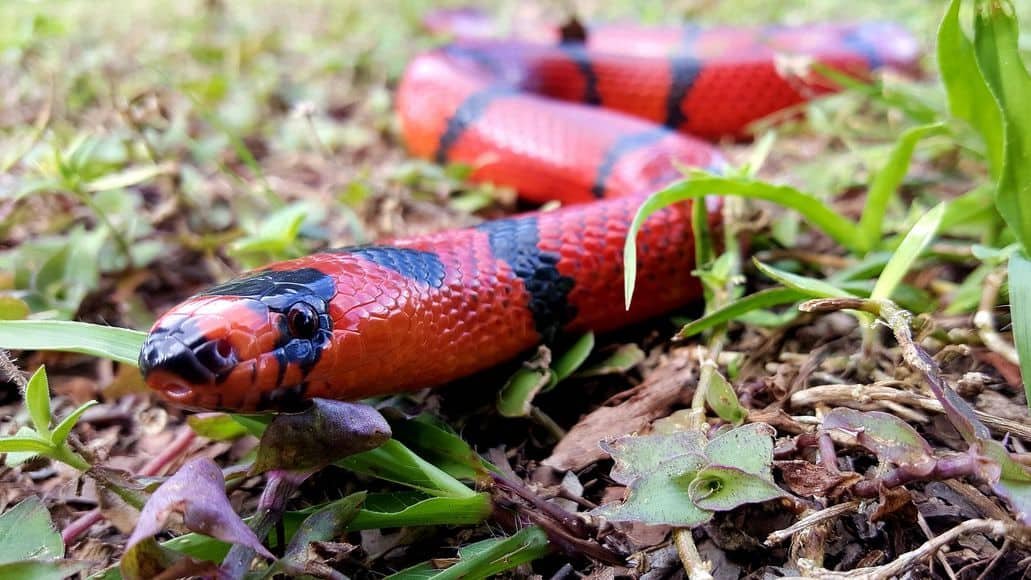
Milk snakes are definitely among the most colorful pet snakes you’ll ever see. They wear bright bands of red, black, and yellow or white.
Honduran milk snakes in particular are super vibrant, with bands of red, black, and orange. You really can’t miss them.
Milk snakes look a lot like coral snakes. That similarity helps them avoid predators, even though they’re totally harmless to humans.
Their color patterns vary a lot depending on where they live. In Ohio, you’ll spot narrow black bands, wine-red phases, and even light tan patterns.
Milk snakes are part of the kingsnake family and are known for being gentle. Their color changes from region to region keep things interesting. You can find milk snakes all over North America. Each area has its own special color twist, so they’re always fun to spot.
8. Coral Snake
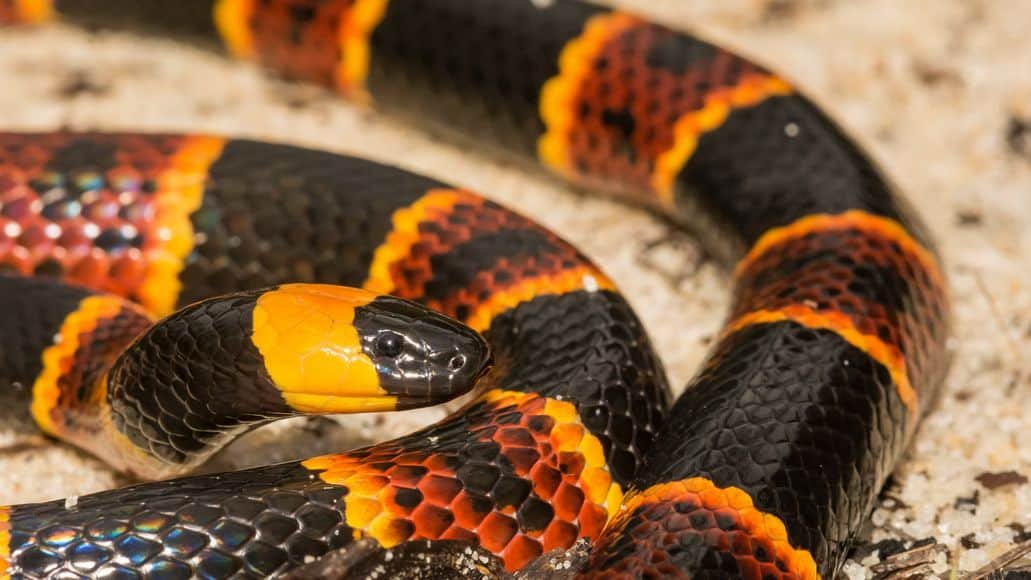
Coral snakes are easy to recognize by their bold bands of red, yellow, and black. These bright colors basically say, “stay back.”
There are a bunch of coral snake species worldwide. You’ll find over 65 in the Americas and 11 more in Asia and Africa.
Most coral snakes are pretty small. Their colorful bands make beautiful patterns that stand out in nature.
The Eastern Coral Snake’s colors warn predators since it packs strong venom. If you see one, just watch from afar.
Coral snakes live in all sorts of places—forests, grasslands, and more. They hunt small prey and rely on their colors to keep threats away.
Their bright patterns make them easy to spot. That’s good for you and for other animals who know to steer clear.
9. Blue Racer
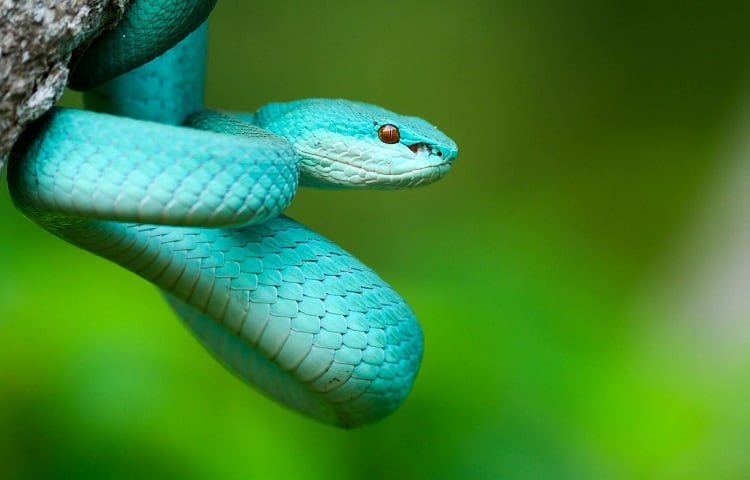
The Blue Racer snake stands out for its stunning blue color. You’ll find this beautiful snake in the Great Lakes region of North America.
Not all Blue Racers look exactly the same. Most are a mix of dark blue and grey, while others show more silvery colors. Some have pure neon blue scales that really catch your eye. Many Blue Racer snakes have bright blue scales on their sides.
These pair nicely with their deep gray or brown upper bodies and cream-white bellies. You might notice that some individuals have black eye patches.
This gives them extra personality and a unique look. Their smooth, glossy scales shimmer under the sun. This gives them an almost metallic appearance.
The Blue Racer is non-venomous, so you don’t need to worry about danger. Good thing, because these snakes earned their name for good reason. Blue Racers are incredibly fast.
They’re active snakes that move quickly through their habitat.
10. Green Tree Python

The Green Tree Python stands out as one of nature’s most stunning reptiles. You’ll be amazed by its vibrant green color that helps it blend perfectly with tree branches.
What makes this snake truly special is its color transformation. Young Green Tree Pythons start life as yellow, red, or orange babies.
As they grow, they gradually change to their famous bright green adult coloration. You can spot these beautiful snakes by their yellow and blue markings along their bodies. These extra colors create striking patterns against their green scales.
Green Tree Pythons spend most of their time high in trees. You’ll often see them in their signature resting pose – coiled gracefully over a branch with their head nestled in the center.
These snakes live in Australia and New Guinea. They use their strong tail to move through branches with ease.
Their large eyes help them hunt at night when they’re most active. The Green Tree Python can grow over 6 feet long. Despite their impressive size, they have relatively thin bodies that help them navigate through trees.
11. Rosy Boa
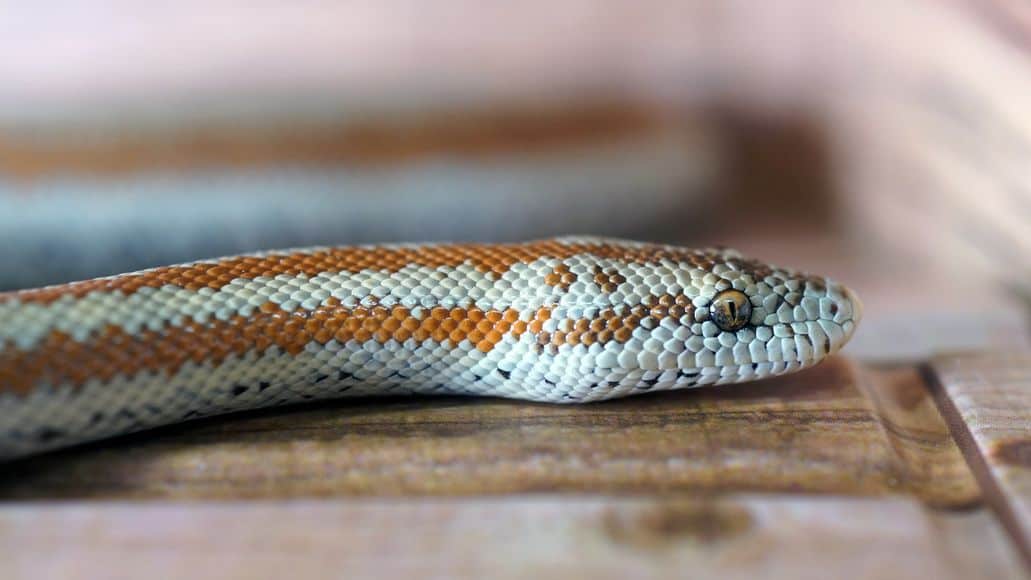
You’ll find the rosy boa to be one of the most beautiful pet snakes you can own. These gentle snakes belong to the Boidae family and make excellent companions for snake enthusiasts.
Rosy boas come in many colors and patterns depending on where they live. You can see them in shades ranging from pink to orange to deep red.
The Desert Rosy Boa is one of the most popular types you’ll encounter. These snakes come from Southwest Arizona and Southern California.
You’ll discover that rosy boa morphs range from fluorescent orange-red to pink or black. Breeders have created special variations like albinos and snow morphs too.
These snakes are one of the most common pet snakes in the US. You’ll appreciate their calm nature and stunning appearance.
The mix of genetics creates stunning colors and patterns that make each snake unique. You can find natural variations from Mexico, California, and Arizona.
What Makes Snakes So Colorful?
Snake colors come from two main sources: pigments in their skin and the way light bounces off their scales. These bright colors help snakes survive by warning predators they are dangerous or helping them blend into their surroundings.
Pigmentation And Structural Color
A snake’s vibrant colors come from special cells called chromatophores. These cells contain different pigments that create reds, yellows, blacks, and browns.
- Melanophores produce black and brown colors through melanin.
- Xanthophores create yellow pigments.
- Erythrophores make red colors appear bright and bold.
Some snakes get their amazing colors from structural coloration instead of pigments. This happens when light hits tiny structures in their scales and creates colors. Blue and green colors often come from this light-reflecting process.
The Blue Malaysian Coral Snake shows deep blue coloring that comes from structural color rather than blue pigments. Iridescent scales create rainbow-like effects when light hits them at different angles.
This makes some snakes appear to change colors as they move.
Evolutionary Advantages Of Bright Colors
Bright colors serve important survival purposes for snakes. Warning coloration tells predators that a snake is venomous or dangerous to eat.
The Eastern Coral Snake uses vivid red, yellow, and black bands to indicate its venomous nature. This pattern warns other animals to stay away.
Camouflage helps snakes blend into their environment. Green tree snakes match leaves and branches perfectly.
Desert snakes often have sandy colors that match rocks and soil. Some colorful patterns confuse predators during attacks.
Bold stripes and spots make it hard for enemies to track a snake’s movement. Mimicry allows harmless snakes to copy dangerous species. For example, non-venomous milk snakes have similar colors to coral snakes, which protects them from predators.
Habitats And Global Distribution Of Colorful Snakes
You’ll find the most colorful snakes in warm, humid tropical rainforests across Asia, Africa, and South America. Desert regions also host vibrant species that use bright colors for different survival strategies.
Tropical Rainforests
Tropical rainforests house the majority of the world’s most colorful snake species. These warm, humid environments provide perfect conditions for vibrant reptiles to thrive.
You can find the Asian Vine Snake in tropical forests and swamps across southern Asia. This bright yellow-green snake grows 5-6 feet long and lives in lowland jungles.
Key Rainforest Regions:
- Southeast Asian jungles (Thailand, Malaysia, Indonesia)
- Amazon Basin in South America
- Central African rainforests
- Madagascar’s eastern forests
The dense canopy provides multiple layers where colorful snakes can hunt. Tree-dwelling species like green tree pythons use their bright colors to blend with leaves and flowers.
Many rainforest snakes eat tree frogs and lizards. The thick vegetation gives them perfect cover while hunting.
You’ll notice that rainforest snakes often have the brightest colors. The filtered sunlight through leaves creates an environment where vivid greens, blues, and reds help with camouflage.
Deserts And Arid Regions
Desert environments create unique challenges that lead to different color patterns in snakes. You’ll find species with bold stripes and contrasting colors in these dry regions.
Coral snakes thrive in semi-arid areas across the southwestern United States and Mexico. Their bright red, yellow, and black bands serve as warning colors to predators.
Desert Adaptations:
- Burrowing behavior to escape heat
- Nocturnal hunting during cooler hours
- Water conservation abilities
- Heat-resistant scales
California’s coastal regions host colorful garter snakes. These areas have mild, dry climates that support diverse snake populations.
You’ll find that desert snakes often have more contrasting patterns than solid colors. The harsh sunlight and sparse vegetation require different camouflage strategies.
Many desert species are smaller than their rainforest cousins. Limited food sources mean they must be more efficient hunters.
Most Colorful Snakes: Conclusion
The world’s most colorful snakes really show off nature’s wild creativity. These beautiful snakes come in vibrant colors—think neon greens, deep reds, even electric blues.
Some of these serpents wear their bright colors like a warning sign, letting predators know they’re dangerous. Others just melt into their surroundings, thanks to their clever patterns.
- Bright colors might mean danger, but sometimes they’re just camouflage
- Plenty of stunning serpents call tropical regions home
- Color patterns help them survive and communicate
- Some gorgeous species actually make good pets, but others are venomous
Next time you spot a snake, maybe you’ll wonder why it looks so unique. These colorful creatures really deserve a little respect—and honestly, they need protection too.
Maybe you love snakes, or maybe they make you uneasy. Either way, it’s hard not to admire their wild beauty. The wild variety of colors and patterns among snakes just reminds us how unpredictable and diverse life on Earth can be.
Leave a Reply